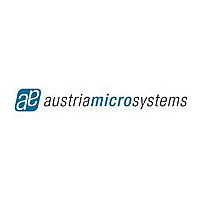AS5045-ASST austriamicrosystems, AS5045-ASST Datasheet - Page 30

AS5045-ASST
Manufacturer Part Number
AS5045-ASST
Description
IC ENCODER PROG 12-BIT 16-SSOP
Manufacturer
austriamicrosystems
Type
Linear, Rotary Encoder - Programmabler
Datasheet
1.AS5045_DB_V2.pdf
(33 pages)
Specifications of AS5045-ASST
Sensing Range
45mT ~ 75mT
Voltage - Supply
3 V ~ 3.6 V, 4.5 V ~ 5.5 V
Current - Supply
21mA
Current - Output (max)
4mA
Output Type
Digital, PWM, 12-Bit Serial
Features
Programmable
Operating Temperature
-40°C ~ 125°C
Package / Case
16-SSOP
Lead Free Status / RoHS Status
Lead free / RoHS Compliant
Other names
AS5045-ASSTTR
Available stocks
Company
Part Number
Manufacturer
Quantity
Price
Company:
Part Number:
AS5045-ASST
Manufacturer:
AMS
Quantity:
1 145
Part Number:
AS5045-ASST
Manufacturer:
AMS
Quantity:
20 000
AS5045
Data Sheet
17.6 Temperature
17.6.1 Magnetic Temperature Coefficient
One of the major benefits of the AS5045 compared to linear Hall sensors is that it is much less sensitive to
temperature. While linear Hall sensors require a compensation of the magnet’s temperature coefficients, the AS5045
automatically compensates for the varying magnetic field strength over temperature. The magnet’s temperature drift
does not need to be considered, as the AS5045 operates with magnetic field strengths from ±45…±75mT.
Example:
An NdFeB magnet has a field strength of 75mT @ –40°C and a temperature coefficient of -0.12% per Kelvin. The
temperature change is from –40° to +125° = 165K. The magnetic field change is: 165 x -0.12% = -19.8%, which
corresponds to 75mT at –40°C and 60mT at 125°C.
The AS5045 can compensate for this temperature related field strength change automatically, no user adjustment is
required.
17.7 Accuracy over Temperature
The influence of temperature in the absolute accuracy is very low. While the accuracy is ≤ ±0.5° at room
temperature, it may increase to ≤±0.9° due to increasing noise at high temperatures.
17.7.1 Timing Tolerance over Temperature
The internal RC oscillator is factory trimmed to ±5%. Over temperature, this tolerance may increase to ±10%.
Generally, the timing tolerance has no influence in the accuracy or resolution of the system, as it is used mainly for
internal clock generation.
The only concern to the user is the width of the PWM output pulse, which relates directly to the timing tolerance of
the internal oscillator. This influence however can be cancelled by measuring the complete PWM duty cycle instead
of just the PWM pulse (see 17.5).
www.austriamicrosystems.com
Revision 1.7
30 – 33














